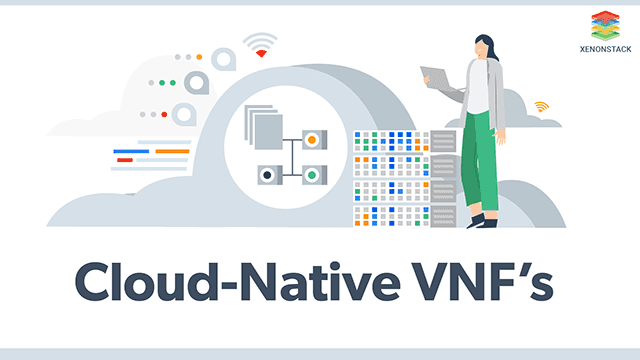
What is a Virtual Network Function (VNFs)?
The thought behind Network functions virtualization (NFV) with Software-defined networking (SDN) is to achieve agility, flexibility, and dynamic scaling in network infrastructure, creating their way toward technology transformation. Basically, with Software-defined networking (SDN), network administrators or operators will get complete control of their Network, and with Network functions virtualization (NFV) architecture, Virtualized infrastructure replaces the network equipment. It will run and host on this virtual infrastructure and serve as a software implementation of virtualized network devices and run on a movable and scalable machine. Virtual Network Functions (VNFs) are hosted on Commercial Off-the-Shelf (COTS) computing, networking infrastructure, and storage. Now multiple vendors are offerings a solution to various network functions.
Virtual Network Functions Components
- Switching: CG-NAT, BNG, routers.
- Traffic analysis: QoE measurement, DPI.
- Edge Devices: Broadband remote access server, IP Edge, vCPE.
- Tunneling gateway elements: IPSec/SSL VPN gateways.
- Signaling: IMS, SBCs.
- Application-level optimization: Load Balancers, CDNs.
- Security functions: spam protection, virus scanners, firewalls.
- Set-top boxes and home routers.
Limitation of traditional VNFs
- A considerable amount of hardware is consumed by VNFs to be highly available.
- VNFs are tested, configured, and developed with specified NFV hardware infrastructure.
- Manual installation, deployment, and configuration are needed for Network functions virtualization infrastructure (NFVi).
- API is not provided to enable auto-scaling.
Overview of Cloud-Native VNFs
For vendors creating cloud-native VNFs is a solution, and having all the cloud-native characteristics of VNFs is a revolution in software development. Features of it are microservices-based, containerized functions designed explicitly for orchestration and dynamically managed. Scalability and self-management capability is the primary differentiator of it from traditional VNFs.It solves the above-discussed limitations of traditional, and Cloud-native VNFs API enables the following -
- Automated configuration and installation
- Scale automatically with the dynamic requirement of the Network
- Fault-tolerant or self-healing
- VNFs' automatic monitoring and analysis for capacity management, errors, and performance
- Upgrade and update VNFs automatically for applying for new patches and releases
- Simplified management and standard make less power consumption by reducing unnecessary resources.
- Process sharing and reusability within VNFs can be achieved.
- Sharing of VNFs can be done within the NFV environment.
Cloud-Native VNFs Architecture
VNF runs network functions on NFV infrastructure (NFVi). NFV orchestrator does orchestration of VNFs. These are software images created to use as a network function.
EM (Element Management)
Element management performs functional management of VNF, i.e., FCAPS ( Fault, Configuration, Accounting, Performance, and Security Management). It manages through proprietary interfaces. There may be one Element management system (EMS) per VNF or a single Element management system (EMS) to manage multiple VNFs.
VNF Manager
It performs the life cycle management of VNF instances. It can manage a single or multiple VNFs. It also does FCAPS for virtual components of VNF. The difference between EM and VNFM must be noted EM manages functional components while the VNF Manager controls virtual components.
NFVI (Network Function Virtualization Infrastructure)
The environment used to run VNFs is NFVI; it consists of Physical resources, a virtualization layer, and virtual resources described below.
Memory, Compute, and Networking Resources
It is the natural part of NFVI. Any storage server or physical server comes under this category.Virtual Memory, Virtual computing, and Virtual Networking Resources
It is the virtual part of NFVI. Virtual resources are abstracted from physical resources that are utilized by VNFs.Virtualization Layer
This is generally known as a “Hypervisor.” This is responsible for abstracting physical resources into virtual resources.
Virtual Network Services
Communication between multiple computers, virtual machines (VMs), virtual servers, or other devices across various office and data center locations is made possible by virtual networking.
5 Trends That Are Driving Virtual Network Services
- Businesses must expand their reach more quickly.
- As digitalization picks up speed, networks must adapt.
- A logical progression for SD-WAN would be to speed up cloud access.
- The on-demand, direct connectivity that hybrid multi-cloud is enabling
- Security of the network perimeter is under increased pressure because of the expanding edge.
A Holistic Strategy
To understand more about how Enterprise Managed Network Services helps Enterprises to enhance Network Security and control Operating Costs, we recommend taking the subsequent steps -- Read more about " Cloud Native Continuous Integration (CI) and Dashboard."
- Contact Us for Cloud Native Application Development Services and Solutions
.webp?width=1921&height=622&name=usecase-banner%20(1).webp)


